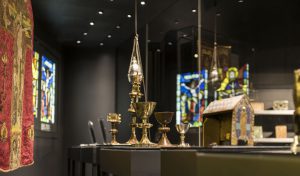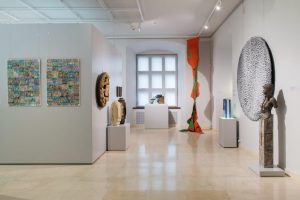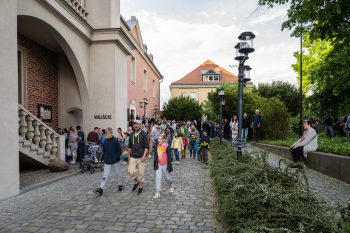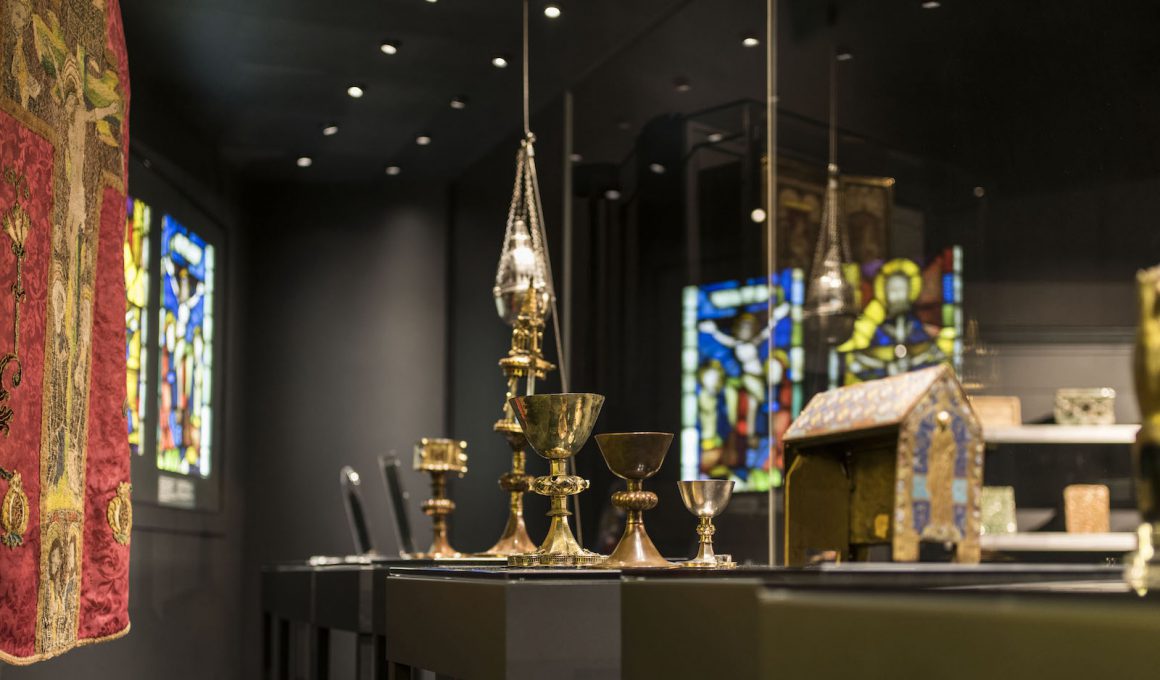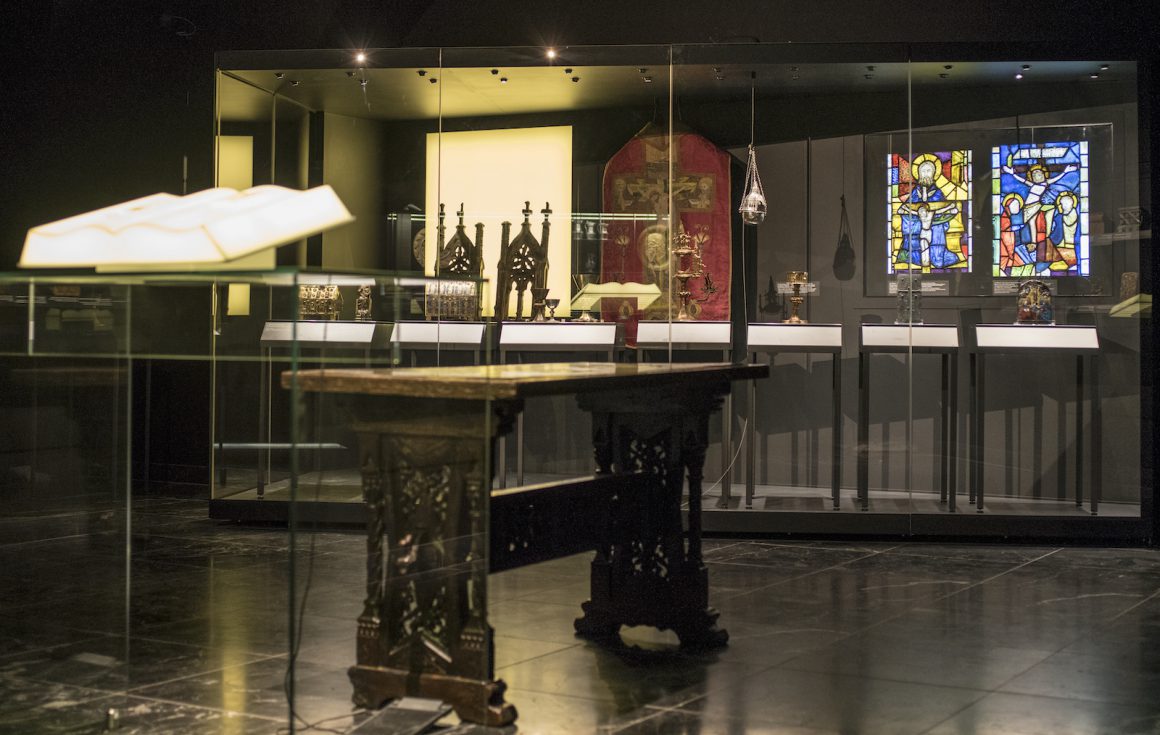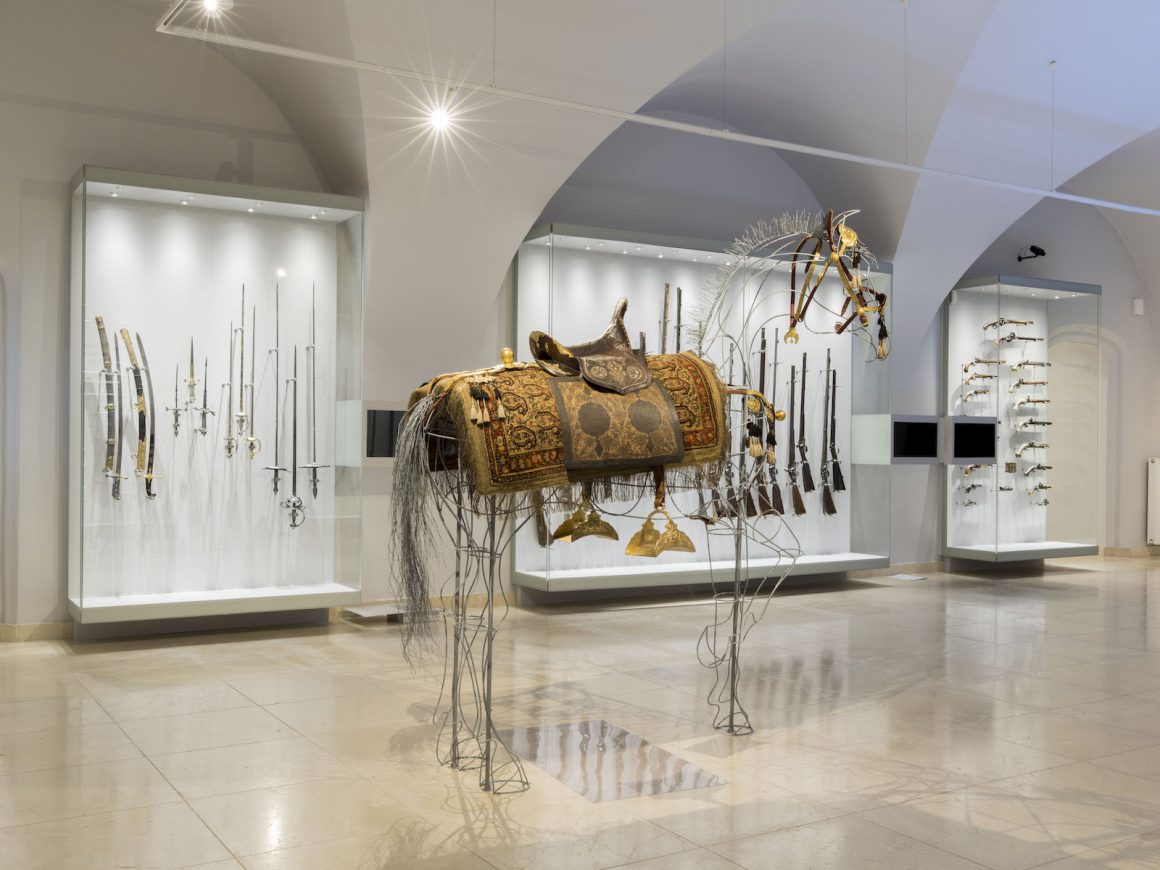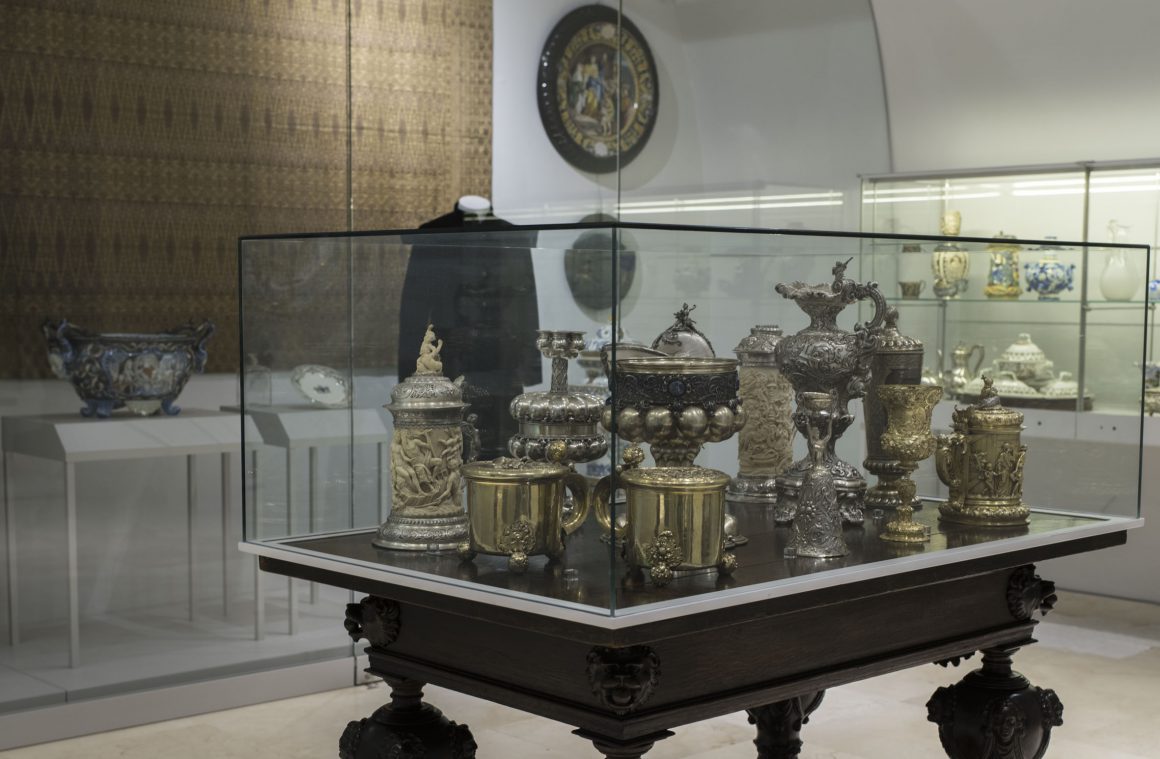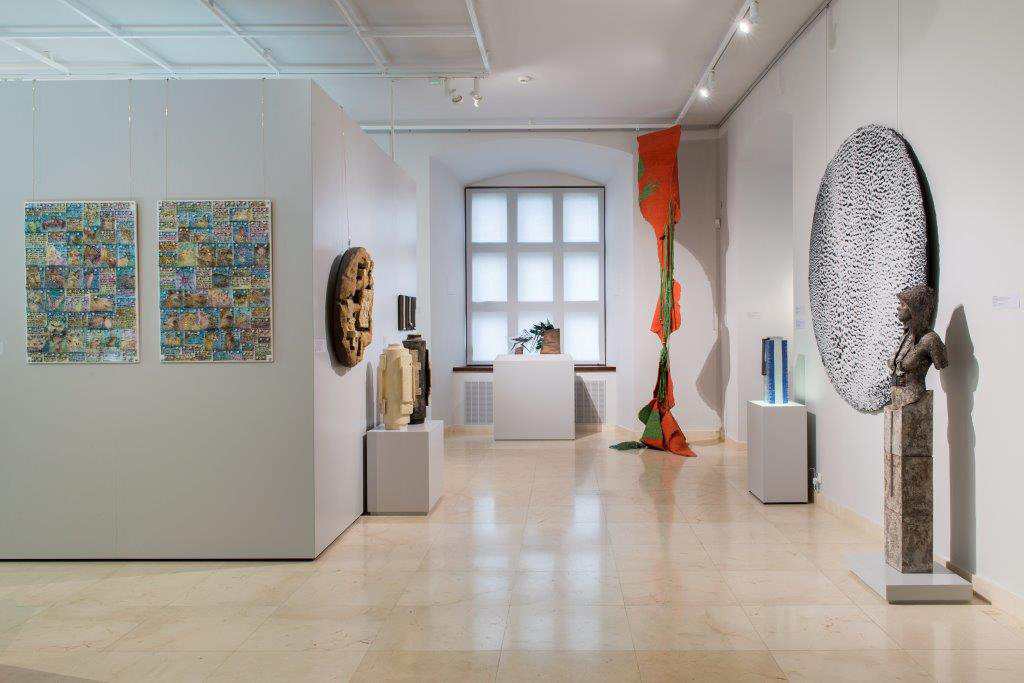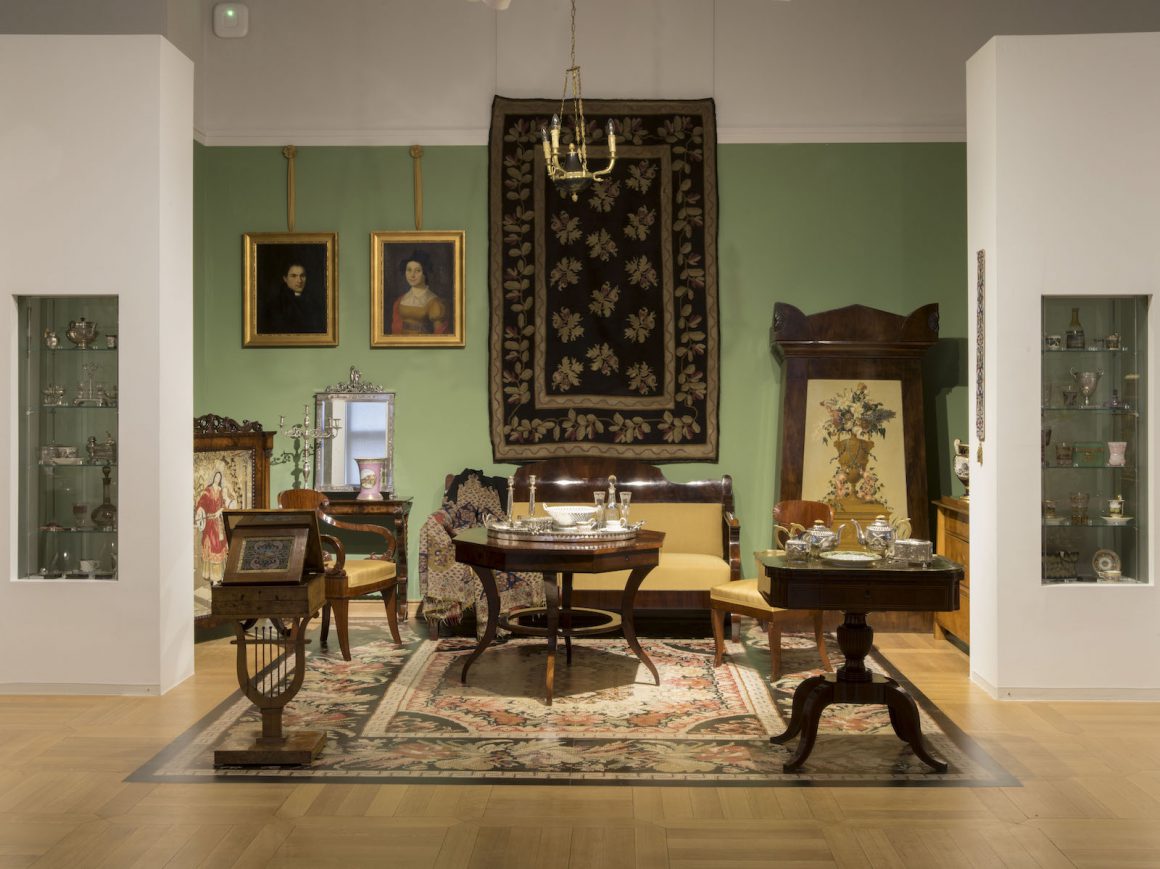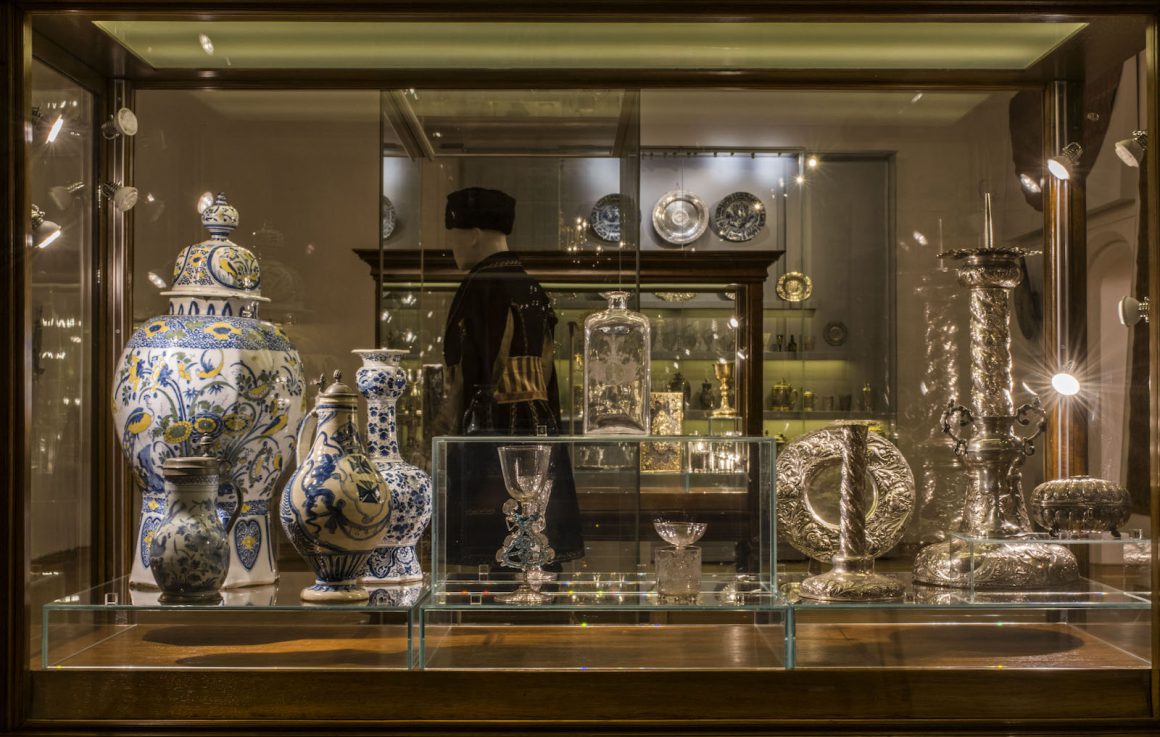The Museum of Applied Arts is located in Przemysł Castle, on a hill in the heart of Poznań.
In the first phase of construction, brick perimeter walls and a tower in a square-like shape were built. The tower was the highest point, allowing for a distant observation of the terrain and the early detection of an approaching enemy. It also allowed for controlling the city at its foot. The entrance to the fortress was from the south. The look of the castle remained a mystery until the 16th century. The only documented source is the reconstruction of the castle undertaken in 1536 by the General Starost of Greater Poland Andrzej Górka. The building he erected, with four peaks, is known from 17th century images.
In the second half of the 18th century, the castle was in decline. In 1783, at the initiative of Kazimierz Raczyński, the last General Starost of Greater Poland, a baroque building was erected on the site of the Renaissance house. This building still exists today. In the 19th century, a building was added to the south of it, which was destroyed during World War II.
Shortly after its completion, the concept of restitution – the reconstruction of the royal castle – was born. This idea remained relevant for over half a century. In the years 2010-2013, a historic building was erected, connected with the building of the Raczyński family and an additional tower built on the relics of the original 13th century tower. From today’s 43-meter tower there is a unique view of the city and its surroundings.
Keeping in mind the royal past of the place, a multimedia exhibition dedicated to King Przemysł and the Piast dynasty as well as the history of the castle was placed in a dedicated space on the ground floor of the castle. The White Eagle as the heraldic symbol of Poland was particularly highlighted in the Przemysł Room. Its beginning was the image on the reverse side of the royal seal of King Przemysł, which is presented in the form of a hologram in the central part of the room.
Meanwhile, in the space connecting the Raczyński and Przemysł Castle buildings, a permanent exhibition of the Museum of Applied Arts – the only museum of applied arts in Poland – has been composed on an area of almost 1500 m².
The exhibition dedicated entirely to applied arts consists of around 2000 pieces from the Middle Ages to the present day, arranged in a modern way. It includes furniture, ceramics, glass and metal products, weapons, jewelry, fabrics, costumes and accessories.
Selected topics and arrangement in each of the rooms differently organize the space, referring to the appropriate presented epoch of ideological, aesthetic and artistic climate. The theme of collecting was also emphasized, indicating the historical conditions and the varied character of collecting from private collections to state institutions. A path for children was composed, facilities for people with disabilities were introduced and multimedia devices were used.
Museum exhibitions with accompanying information and many elements that enrich the knowledge of ancient objects, as well as additional spaces for educational activities and a wide range of meetings, create a space for dialogue with both history and other people. In this broad discourse, the first-rate place is occupied by a virtuoso, skillfully crafted work of art. The exhibited objects tell a multi-threaded story about the times in which they were made and the people they served. Their voices were given, because talking about the people of past epochs, their needs, interests, desires, also tells a lot about who we are today.
Going beyond the usual museum show, the exhibition works on different senses and encourages active discovery. The rich program of events, implemented as part of many thematic cycles, presents the museum collection more broadly, enriching the narrative of the permanent exhibition, but also going beyond it.



